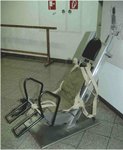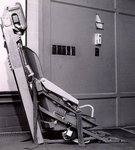FLYBOYJ
"THE GREAT GAZOO"
delcyros said:Ummm,
Flyboy, right we have discussed the P-80 issue, but in Korea, the F-84, F-86 and even the Mig-15 was designed in the same manner (fuel tanks in front of the engine), so they indeed have shown little differences. The enforced structure around the tanks couldn´t prevent a 20mm hit from holing. If fuel goes out it will - narly automaticly- inflame by the engine. Bad thing. The He-162, Me-262 and Meteor are designed otherwise. I also think that the Meteor- while outclassed by the Mig´s did perform very well in the ground attack role in Korea.
The fuel tank in the F-80 is in a bay above the air intake. I remember this installation distinctly in my time working on T-33s. The tank is self sealing, but I recognize that this isn't going to stop any cannon shell. With that in mind, a round would have to puncture the tank, penetrate the air intake compartment in such a way that fuel could be ingested into the engine. I think the aircraft would be long destroyed in this scenario unless small arms fire were involved, and even then the damage would have to be in an exact spot. In Korea the P-80 was committed to a more hazardous role and was shot at by every Russian built firearm deployed into the area including heavy AA. If anything, the F-80 proved to be reliable and rugged and because of the Centrifugal flow compressor there was a smaller "critical" engine area to sustain damage, a positive characteristic of a centrifugal flow turbine engine.
I remain, the "Turtle Back" fuel tank design found on the F-80, Mig-15, and even F-84, presented no more hazard than locating it on the belly, you will always have a vulnerable area where the golden BB could penetrate. The area to penetrate was small and I doubt even the best fighter pilot could purposely place a cannon round in that exact location, and even if it was done, a lot of other things would go wrong before the damaged fuel tank allowed fuel to be ingested into the engine. If the installation of the fuel tank in that location was that hazardous, we would have pilot reports of these aircraft lighting up like a Roman candle anytime they were hit....




